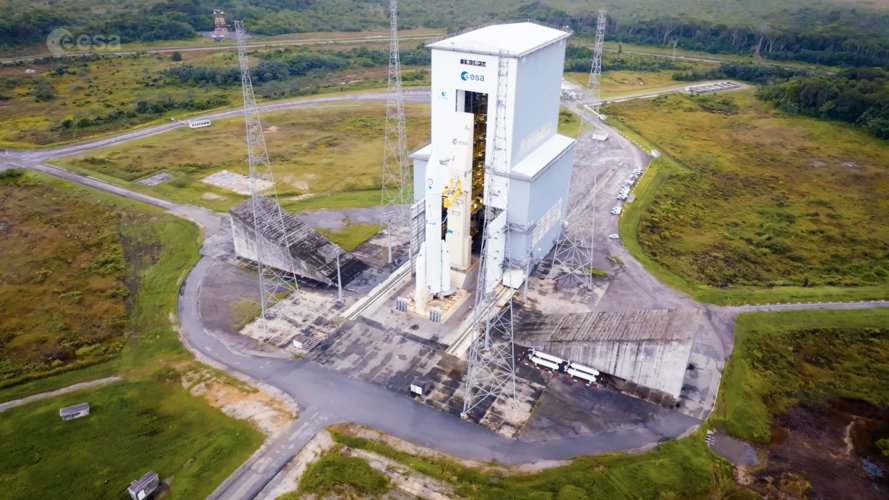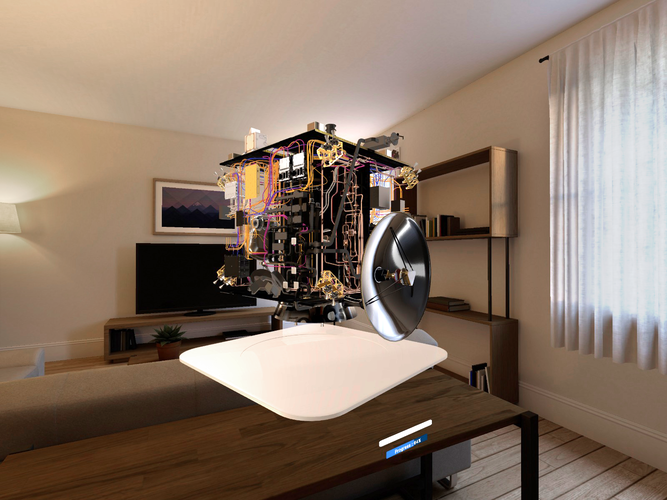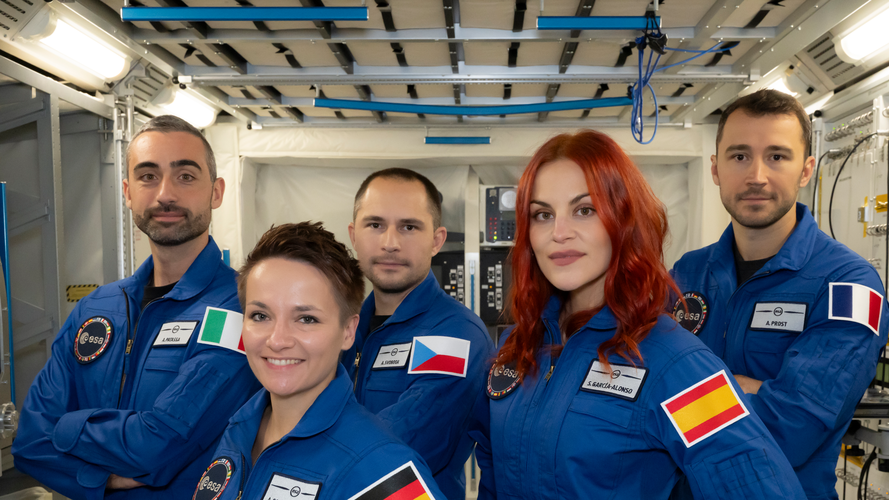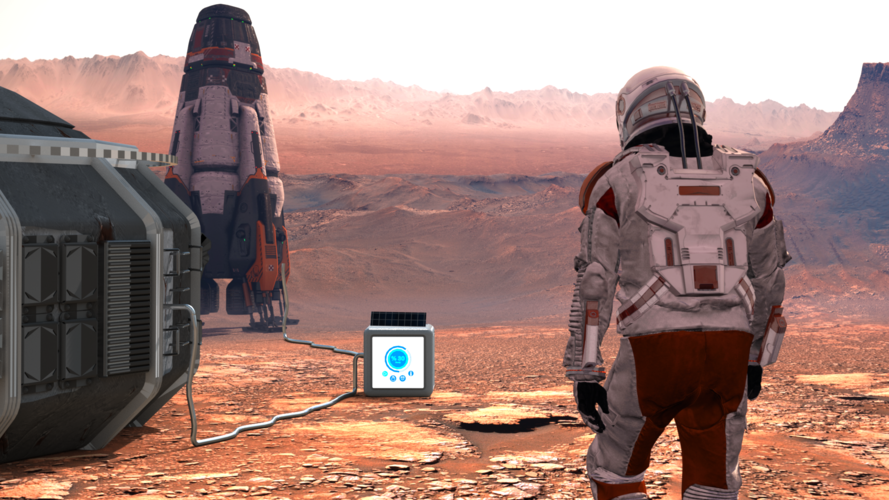Turion Space secures $32.6 million military contract for in-orbit space surveillance
Friday, 20 December 2024 14:26

Gateway: Wired for deep space
Friday, 20 December 2024 13:07This request seems a bit unusual, so we need to confirm that you're human. Please press and hold the button until it turns completely green. Thank you for your cooperation!
Press and hold the button
If you believe this is an error, please contact our support team.
185.132.36.159 : dc3a9872-5b2e-48d9-8793-ec77a0b5
ESA and NASA deliver first joint picture of Greenland Ice Sheet melting
Friday, 20 December 2024 13:01
Global warming is driving the rapid melting of the Greenland Ice Sheet, contributing to global sea level rise and disrupting weather patterns worldwide. Because of this, precise measurements of its changing shape are of critical importance for adapting to climate change.
Now, scientists have delivered the first measurements of the Greenland Ice Sheet’s changing shape using data from ESA's CryoSat and NASA's ICESat-2 ice missions.
The case to build a new ISS: the International Solar Sunshade
Friday, 20 December 2024 13:00
ESA 2025: A fifty-years legacy of building the future
Friday, 20 December 2024 12:00 Video:
00:10:27
Video:
00:10:27
In 1975, 10 European countries came together with a vision to collaborate on key space activities: science and astronomy, launch capabilities and space applications: the European Space Agency, ESA, was born.
In 2025, we mark half a century of joint European achievement – filled with firsts and breakthroughs in science, exploration and technology, and the space infrastructure and economy that power Europe today.
During the past five decades ESA has grown, developing ever bolder and bigger projects and adding more Member States, with Slovenia joining as the latest full Member State in January.
We’ll also celebrate the 50th anniversary of ESA’s
Year in images 2024
Friday, 20 December 2024 10:00
Year in images 2024
Our year through the lens: a selection of our favourite images for 2023
Hera asteroid mission in your house
Friday, 20 December 2024 09:59 Image:
Hera asteroid mission in your house
Image:
Hera asteroid mission in your house The ART of training
Friday, 20 December 2024 09:38
For the first group of ESA’s Astronaut Reserve, two intensive months of Astronaut Reserve Training (ART) have come to a close. During this initial training phase, members of the ESA Astronaut Reserve Sara García Alonso from Spain, Andrea Patassa from Italy, Arnaud Prost from France, Amelie Schoenenwald from Germany, and Aleš Svoboda from Czechia were introduced to essential skills required for future space exploration and scientific research.
Happy holidays from Hera!
Friday, 20 December 2024 08:05 Image:
Happy holidays from Hera!
Image:
Happy holidays from Hera! Earth from Space: Star cities
Friday, 20 December 2024 08:00 Image:
With the festive season approaching, even Earth-observing satellites are getting into the spirit, capturing a stunning compilation of European cities that resemble stars.
Image:
With the festive season approaching, even Earth-observing satellites are getting into the spirit, capturing a stunning compilation of European cities that resemble stars. Producing fuel on Mars using astronaut wastewater
Friday, 20 December 2024 07:07
In future missions to Mars, astronauts will need to maximise the use of all resources available on site to produce essential supplies like oxygen, water and fuel. A team from Spanish technological centre Tekniker and the University of Cantabria is developing a system that uses sunlight to turn carbon dioxide and wastewater into methane, which can be used as fuel.
Airbus US Space and Defense partners with Aerostar to advance stratospheric ISR technologies
Friday, 20 December 2024 06:28 Airbus U.S. Space and Defense and Aerostar successfully completed a joint Internal Research and Development (IRAD) stratospheric test flight as part of their Cooperative Research and Development Agreement (CRADA). The test demonstrated the use of satellite backhaul technologies on high-altitude platforms for enhanced Intelligence, Surveillance, and Reconnaissance (ISR) capabilities.
The mi
Airbus U.S. Space and Defense and Aerostar successfully completed a joint Internal Research and Development (IRAD) stratospheric test flight as part of their Cooperative Research and Development Agreement (CRADA). The test demonstrated the use of satellite backhaul technologies on high-altitude platforms for enhanced Intelligence, Surveillance, and Reconnaissance (ISR) capabilities.
The mi China's space journey continues apace
Friday, 20 December 2024 06:28 The first-ever samples retrieved from the moon's far side, an iconic feat achieved by China's most recent lunar expedition, Chang'e 6, were on display at the 15th China International Aviation and Aerospace Exhibition, which took place in Zhuhai, Guangdong province, from Nov 12 to 17.
This was the first time the valuable lunar substances had been shown to the public since they were brought
The first-ever samples retrieved from the moon's far side, an iconic feat achieved by China's most recent lunar expedition, Chang'e 6, were on display at the 15th China International Aviation and Aerospace Exhibition, which took place in Zhuhai, Guangdong province, from Nov 12 to 17.
This was the first time the valuable lunar substances had been shown to the public since they were brought Massive eruptions did not trigger dinosaur extinction
Friday, 20 December 2024 06:28 Massive volcanic eruptions in India, once theorized as a potential cause of dinosaur extinction, likely played a minimal role in their demise, according to new research by climate scientists at Utrecht University and the University of Manchester. Their findings suggest that while these eruptions caused a temporary cooling period, their climatic effects had dissipated thousands of years before th
Massive volcanic eruptions in India, once theorized as a potential cause of dinosaur extinction, likely played a minimal role in their demise, according to new research by climate scientists at Utrecht University and the University of Manchester. Their findings suggest that while these eruptions caused a temporary cooling period, their climatic effects had dissipated thousands of years before th 


